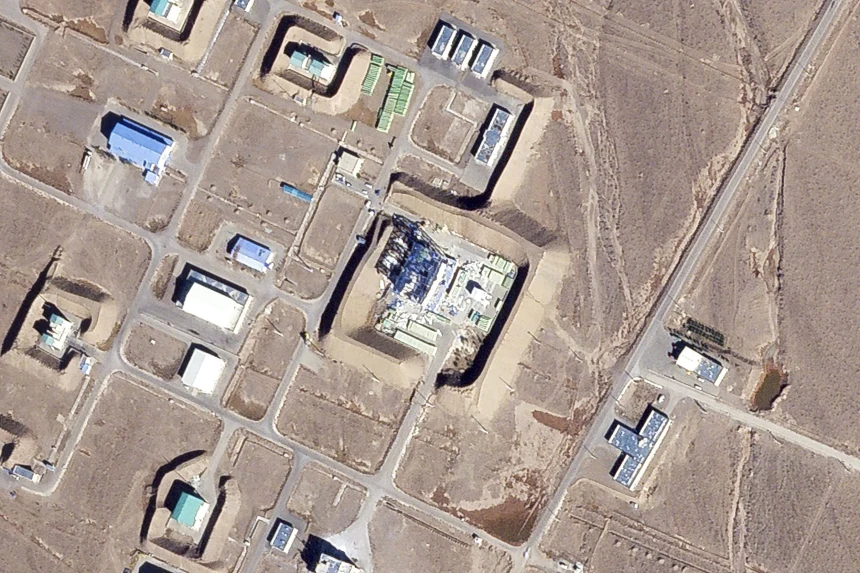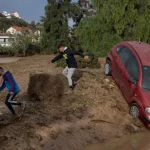Satellite imagery indicates that Israel’s attack on Iran appears to have damaged a key component of Tehran’s ballistic missile production and air defence sites, potentially leaving it exposed to any future attacks, military analysts revealed exclusively after the attack NBC News.
After the attack took place, the press has not been able to ascertain the amount of sites that the Israeli government targeted. The analyst disclosed that the satellite images from Planet Labs suggest that the strikes on Saturday appear to have hit Khojir, a sprawling missile site near Tehran, and Parchin, a massive military base that was part of Iran’s perished nuclear program.
The attack by the IDF appeared to be smaller than the people expected it. The occasional direct attack, a response to Tehran’s Oct. 1 bombardment of more than 200 ballistic missiles, followed extreme U.S. tactfulness in trying to contain a venomous interaction between the two powers that has stoked apprehensions of an all-out war.
Israeli Prime Minister Benjamin Netanyahu, in a speech, noted that the Israeli government were able to hit hard Iran’s defence capabilities, destroying their ability to produce missiles that are aimed at attacking them.
Iran’s supreme leader, Ayatollah Ali Khamenei, said the attack “should neither be downplayed nor exaggerated. Any possible response from Tehran is still a subject of speculation.
It was learnt that the major target of Israel was Iran’s missile production process instead of storage sites, which, according to them, will make it difficult for them to add to an already diminishing supply of missiles.
Fabian Hinz, a research fellow for defence and military analysis at the International Institute for Strategic Studies, a London-based think tank, noted that the Israeli government had hit buildings where specialized fuel mixers produce propellent for ballistic missiles by mixing various chemicals. He noted that it was an an easier and more effective target than missiles themselves.
It hit buildings where specialized fuel mixers produce propellent for ballistic missiles by mixing various chemicals, said Fabian Hinz, a research fellow for defense and military analysis at the International Institute for Strategic Studies, a London-based think tank. That’s an easier, and more effective, target than missiles themselves.
He noted that the attack carried out by the Israeli government was a sensitive and smart attack which was aimed at destroying sensitive areas and apparatus.
He noted that the missiles were dispersed all over the country, noting that some of them were deep inside the Iranian centres and underground, which made the attack a very difficult one. According to him, when a missile production centre is attacked, it will be difficult the production of new one, which was likely the idea behind the attack carried out by the IDF.
The Institute for the Study of War, a policy research organization focused on U.S. national security, while speaking on the satellite images, noted that it will take Iran months and years to acquire new mixing equipment which will be used for the production of weapons.
In a comment by the Iranian government, they downplayed the attack but acknowledged that only four soldiers were killed. Speaking on the attack, Iran’s foreign ministry said Monday that the nation’s response will be “firm and serious. Tehran has not acknowledged damage at the Khojir or Parchin military sites.
Michael Horowitz, head of intelligence at Le Beck International, a security and risk management consultancy, explained that downplaying the attack can be used to avoid a response. Still, it may also be a reflexive response to buy time before a decision is made on whether and how to respond.
The strikes also appear to have hit a site known as Taleghan 2, which was previously linked to Iran’s nuclear program. And Israel may have also shot some of Iran’s space capabilities in Shahroud, particularly the production of space launch vehicles, Horowitz said
After the attack, Iranian officials stated that the country would respond, but some individuals stated that there were not many options available to them at the moment.
Hinz noted that their security power has been reduced to a high level; he explained that if the e Iranians conduct this retaliatory strike, it doesn’t cause a lot of damage. Israelis will be like, well, they just spent 200 more of their missiles. Isreal will see it and know that they just spent 200 more of their missiles.
Revamping any of these defence and weapons facilities could take months, putting a strain on any potential response by Iran, which is now more exposed and less able to restock missiles.




